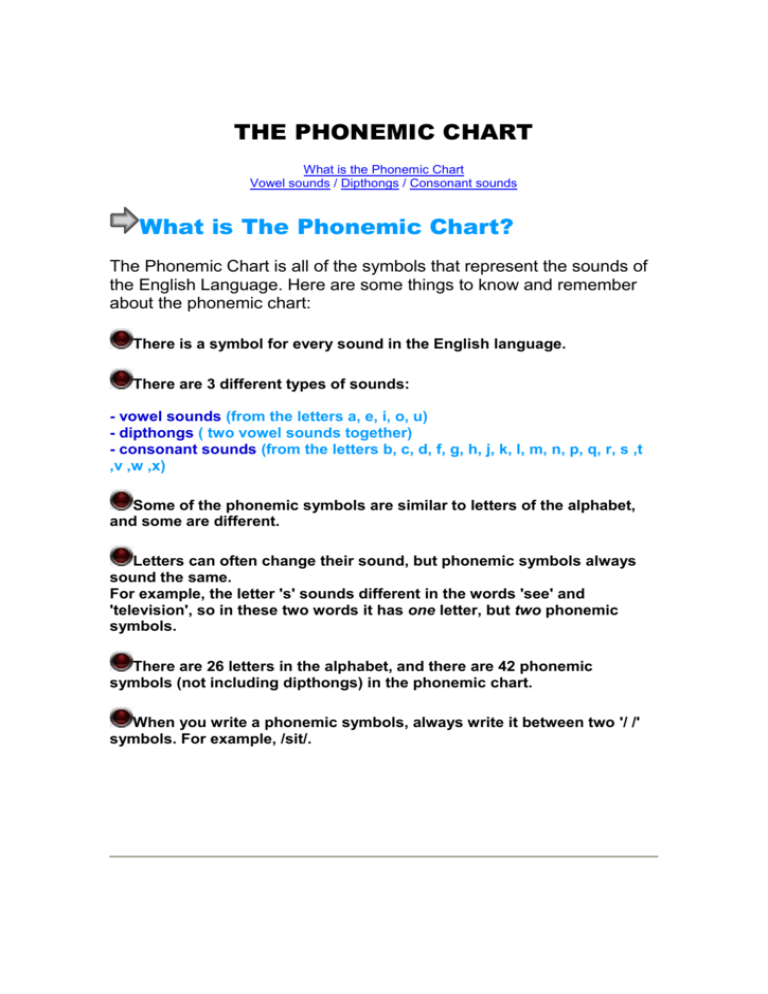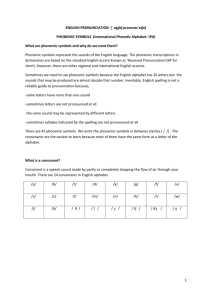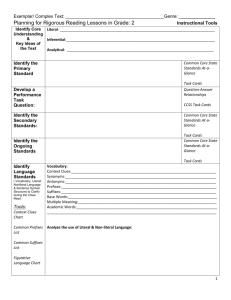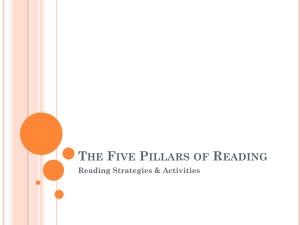THE PHONEMIC CHART
advertisement

THE PHONEMIC CHART What is the Phonemic Chart Vowel sounds / Dipthongs / Consonant sounds What is The Phonemic Chart? The Phonemic Chart is all of the symbols that represent the sounds of the English Language. Here are some things to know and remember about the phonemic chart: There is a symbol for every sound in the English language. There are 3 different types of sounds: - vowel sounds (from the letters a, e, i, o, u) - dipthongs ( two vowel sounds together) - consonant sounds (from the letters b, c, d, f, g, h, j, k, l, m, n, p, q, r, s ,t ,v ,w ,x) Some of the phonemic symbols are similar to letters of the alphabet, and some are different. Letters can often change their sound, but phonemic symbols always sound the same. For example, the letter 's' sounds different in the words 'see' and 'television', so in these two words it has one letter, but two phonemic symbols. There are 26 letters in the alphabet, and there are 42 phonemic symbols (not including dipthongs) in the phonemic chart. When you write a phonemic symbols, always write it between two '/ /' symbols. For example, /sit/. Vowel sounds Vowel sounds in the phonemic chart come from the letters a,e,i,o,u in the alphabet. Vowel sounds can be long or short. For example, 'sit' is a short sound, and 'seat' is a long sound. Long sounds have ':' on the end, so they are easy to remember. These diagrams show you what your lips look like when you make these sounds: Dipthongs Dipthongs are two vowel sounds together. When you pronounce dipthongs, make sure you say both sounds, not just one of them. Consonants Consonant sounds in the pheonemic chart are from the letters b,c,d,f,g,h,j,k,l,m,n,p,q,r,s,t,v,w,x,y,z in the alphabet. Consonant sounds can be voiced (you use your voice) or unvoiced (you don't use your voice). To test this, put your hand on the front of your throat (neck) and say the sound 'be'. You should feel your voice move your throat, because 'b' is voiced. Now say the word 'pea'. For the 'p' sound, you should not feel your voice move your throat, because 'p' is unvoiced. Practice feeling your throat as you say all of the consonant sounds below.






